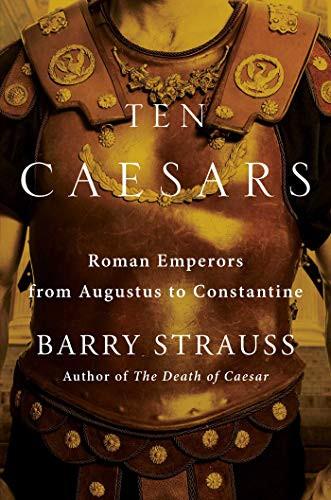
Everyone has someone they know that’s a little odd, a little silly. They might be a friend, or a family member, or even a neighbor that everyone thinks of fondly for their quirky behavior. Maybe you yourself even have ways of doing things that are just slightly irregular or out of the norm (for instance, I always have to eat my fortune cookie before reading the fortune and my family always calls Chicken Divan “Chicken in a Van” because of that one uncle a few Christmases back). Some things are just slightly different, others might be a bit out there. Whatever the case, we all know someone we might say is a little peculiar. It keeps life fun and interesting.
And peculiar characters are often the most endearing in books and television. Just think about the Mad Hatter from Alice in Wonderland, Luna Lovegood from Harry Potter, Steve Bonnet from Our Flag Means Death, and Crowley & Aziraphale from Good Omens.
January 10th is “Peculiar People Day” in the US. It's a day to celebrate those that don’t quite want to conform to the status quo. So without further ado, here are some people that I found peculiar from throughout history and some books that either tie into their weirdness or at the very least relate to their time in history.
Roy Sullivan:
Starting us off, we have Roy Sullivan, a park ranger for the Shenandoah National Park in Virginia. He holds the world record for being struck by lightning 7 times throughout his life. He holds this record for being struck by lightning more times than any other person in history (that we know of). His first time fighting Zeus apparently happened in 1942 and then continued to happen throughout his life in 1969, 1970, 1972, 1973, 1976, and lastly in 1977. Sullivan passed away in 1983 at the ripe old age of 71.
Want to find out other odd records that people hold? Check out one of our Guinness Book of World Records books.
Gebhard Leberecht von Blücher:
We continue with Gebhard Leberecht von Blucher also known as “the hero of Waterloo”. This German aristocrat had some wild and truly absurd adventures and ideas about himself. He was pretty much a soldier from the age of sixteen to the day he died (excusing a short stint in retirement as a farmer) and though his troops also thought he was bonkers crazy, they stood by him, behind him, and continued to fight with him. One was even quoted as saying, “He must lead [us] even if he has a hundred elephants inside him”, which would be weird on its own, but was said because - among things like thinking the floor was heated to lava temperatures - Blucher believed that he was pregnant and going to give birth to a baby elephant. I couldn’t make up some of these if I tried.
Want to learn more about Napoleon and his loss at Waterloo to a crazy soldier? Check out this book: Napoleon: The Decline and Fall of an Empire (1811-1821) by Michael Broers
King Charles the VI of France:
Continuing on with people who thought weird things about themselves, here we have King Charles the Sixth of France (also known as “Charles the Mad” - and for good reason). King from a young age (1380-1422), Charles was on the throne for roughly 42 years where he continued to fall into insanity until he died. Some things he did during this time were to draw weapons on his own soldiers during battle, forget his wife and children for a time, and -one of the more absurd things- believed he was made of glass. He was so terrified of shattering himself that he built a framework of iron bars to wear under his clothing and, by the end of his reign, had walled up his castle in order to keep himself inside of it and away from danger.
For a read featuring the “Mad King” please check out Blood Royal: A True Tale of Crime and Detection in Medieval Paris by Eric Jager
Gloria Ramirez:
Moving on we have a person whose experiences and death still baffle us to this day, Gloria Ramirez or as she is commonly known “the toxic lady”. On February 19th, 1994, 31 year old Ramirez was taken to the hospital after experiencing both an increased heart rate and a drop in blood pressure. Upon her arrival at the facilities, she was unable to communicate sentences coherently and shortly passed away. At this time, several weird things happened - doctors and nurses noticed an oily sheen to Ramirez’s skin, her breath smelled like both fruit and garlic, and her blood smelled like ammonia and had weird particles floating in it. All this in and of itself baffled hospital staff, but more intriguing and concerning was the fact that nurses started dropping like flies around her. Some merely fainted while others experienced shortness of breath and in one case paralysis. Her autopsy had to be conducted in hazmat suits, and to this day doctors still can’t say with 100% certainty what caused all of these different things. The standing theory is that Ramirez was self medicating with dimethyl sulfoxide and after its conversion to dimethyl sulfate caused all sorts of chemical reactions both within Ramirez and with staff.
For more wacky medicine facts, checkout this book: The Mystery of the Exploding Teeth: And Other Curiosities from the History of Medicine by Thomas Morris
Pythagoras:
Next up we have the mathematician, Pythagoras, who had many weird and interesting things associated with him. Most of us know him as one of the fathers of math and the creator of the Pythagorean Theorem, but he also had some peculiar ideas and tendencies about him. We could talk about his math centered cult where he was considered a god, but I’d like to talk about his fear of beans. Pythagoras believed that beans were to be avoided at all costs - especially fava beans. One of the reasons is because he believed that when one expelled gas, they were losing bits of their soul and should therefore abstain from any foods that made one exceedingly gassy. Another reason is that he believed humans and beans were related genetically, coming to this conclusion because he thought bean sprouts looked like human fetuses. Pythagoras equated eating beans with cannibalism and claimed that “Eating fava beans and gnawing on the heads of one’s parents are one and the same”.
There is a bit about Pythagoras in Man, Myth & Magic Vol. 15 but you can learn more about the history of math in this title The Birth of Mathematics: Ancient Times to 1300 by Michael J. Bradley. And just in case you want to take eating beans to the next level, here is a book with 175 recipes on how to cook beans! Bean by Bean by Crescent Dragonwagon
Gaius Julius Caesar Augustus Germanicus:
There are many unsavory things about Calligula that could put him on this list, but I want to talk about some of the more silly things he is known for. At one point a soothsayer told him he was as unlikely to become emperor of Rome as he was to ride his horse across the Bay of Baiae, so, in spite, Calligula built a bridge across the bay and rode his horse across it. Gotta admire the pettiness a bit. The really silly thing he is known for though, is making his favorite horse Consul (which at the time was Rome's highest level of Magistracy). This stemmed from his hatred for the senatorial class of Rome and in turn his distaste for the Republic. Calligula also declared war on the Roman sea god, Neptune. His soldiers were forced to march out to the sea and gather up all the seashells from the shore in order to put Neptune in his place. Though I do think it makes him interesting, many Romans found his behavior annoying at best and dangerous at worst. Due to this and his general mental instability, Calligula didn’t last very long as ruler and was assassinated by his royal guard. Not a great end, but the Roman Emperor definitely made a statement during his short reign. Enough to be remembered by.
For more about Rome and its various rulers, check out the following: Ten Caesars: Roman Emperors from Augustus to Constantine by Barry Strauss.
And that concludes our list for now! There are a ton that I could have probably included about famous people now.
Examples include but are not limited to:
- Lady Gaga and her meat dress,
- Brad Pitt dancing in a chicken suit,
- and Ozzy Ozborne with his live bat stunt.
It’s fun to read and think about. As humans, we are all different and quirky; some of us just happen to be more so than others.

Guinness Book of World Records
"3... 2... 1... We have lift off on another fully revised and updated Guinness World Records annual. The 2023 edition takes readers on a journey that's out of this world, revealing the latest and greatest record-breaking achievements here on Planet Earth and across the vast distances of space."--Amazon.com. As lockdown restrictions ease, humanity's horizons are expanding once again, and our world is experiencing unprecedented change - in the environment, culture, technology and society. Keeping up with this dizzying revolution are the Guinness World Records adjudicators, who've been busier than ever documenting the Officially Amazing. The result is Guinness World Records 2023! With ever more focus on diversity and inclusion, we showcase the most inspirational, eye-catching, mind-blowing achievements from the past year, across a multitude of topics such as gaming and the human body, engineering and wildlife.

Napoleon: The Decline and Fall of an Empire (1811-1821)
"An accomplished Oxford scholar delivers a dynamic new history covering the last chapter of the emperor's life--from his defeat in Russia and the drama of Waterloo to his final exile--as the world Napoleon has created begins to crumble around him".

Blood Royal: A True Tale of Crime and Detection in Medieval Paris
In a true story of crime and detection in fifteenth century Paris, Guillaume de Tignonville, the Provost of Paris and one of history's first detectives, uncovers a conspiracy while investigating the murder of Louis of Orleans, brother to King Charles.

The Mystery of the Exploding Teeth: And Other Curiosities from the History of Medicine
"Delightfully horrifying."--Popular Science This wryly humorous collection of stories about bizarre medical treatments and cases offers a unique portrait of a bygone era in all its jaw-dropping weirdness. A puzzling series of dental explosions beginning in the nineteenth century is just one of many strange tales that have long lain undiscovered in the pages of old medical journals. Award-winning medical historian Thomas Morris delivers one of the most remarkable, cringe-inducing collections of stories ever assembled. Witness Mysterious Illnesses (such as the Rhode Island woman who peed through her nose), Horrifying Operations (1781: A French soldier in India operates on his own bladder stone), Tall Tales (like the "amphibious infant" of Chicago, a baby that could apparently swim underwater for half an hour), Unfortunate Predicaments (such as that of the boy who honked like a goose after inhaling a bird's larynx), and a plethora of other marvels. Beyond a series of anecdotes, these painfully amusing stories reveal a great deal about the evolution of modern medicine. Some show the medical profession hopeless in the face of ailments that today would be quickly banished by modern drugs; but others are heartening tales of recovery against the odds, patients saved from death by the devotion or ingenuity of a conscientious doctor. However embarrassing the ailment or ludicrous the treatment, every case in The Mystery of the Exploding Teeth tells us something about the knowledge (and ignorance) of an earlier age, along with the sheer resilience of human life.

The Birth of Mathematics: Ancient Times to 1300
Profiles 10 individuals from Greece, India, Arabia, and medieval Italy during the time period of 700 BCE to CE 1300 as representatives of the numerous scholars who contributed to the field of mathematics.

Ten Caesars: Roman Emperors from Augustus to Constantine
Barry Strauss tells the story of the Roman Empire from rise to reinvention, from Augustus, who founded the empire, to Constantine, who made it Christian and moved the capital east to Constantinople.
During these centuries Rome gained in splendor and territory, then lost both. By the fourth century, the time of Constantine, the Roman Empire had changed so dramatically in geography, ethnicity, religion, and culture that it would have been virtually unrecognizable to Augustus. Rome’s legacy remains today in so many ways, from language, law, and architecture to the seat of the Roman Catholic Church. Strauss examines this enduring heritage through the lives of the men who shaped it: Augustus, Tiberius, Nero, Vespasian, Trajan, Hadrian, Marcus Aurelius, Septimius Severus, Diocletian and Constantine.